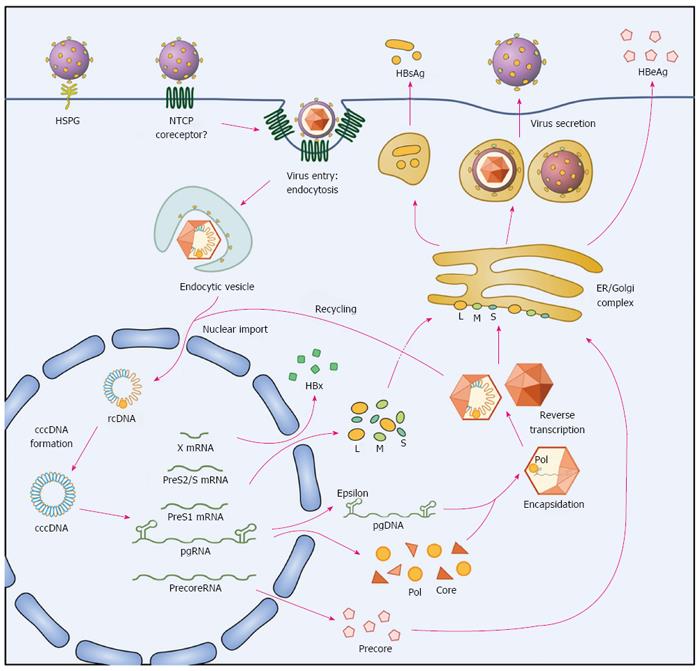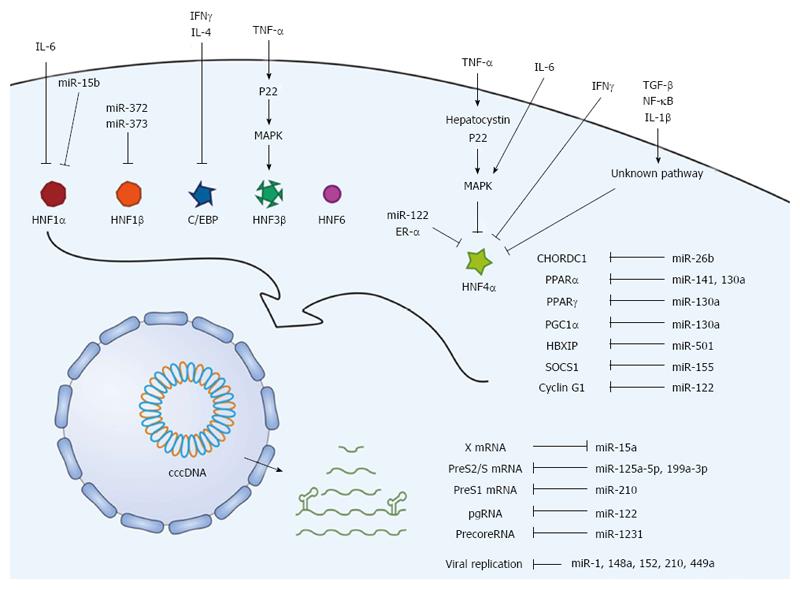Copyright
©The Author(s) 2016.
World J Gastroenterol. Aug 21, 2016; 22(31): 7017-7029
Published online Aug 21, 2016. doi: 10.3748/wjg.v22.i31.7017
Published online Aug 21, 2016. doi: 10.3748/wjg.v22.i31.7017
Figure 1 The life cycle of hepatitis B virus.
Hepatitis B virus (HBV) binds to the surface receptor NTCP and enters hepatocytes, and its genome is released into the nucleus. The relaxed circular HBV genome (rcDNA) is repaired and forms covalently closed circular DNA (cccDNA), which serves as a template for the transcription of viral mRNAs (pregenomic (pg), precore, HBx, PreS1, and PreS2/S RNA). The HBV mRNAs are translated into the large (L), middle (M), and small (S) surface, precore, core, polymerase (pol), and HBx proteins. pgRNA and pol are encapsidated into the capsid, and viral DNA is reverse-transcribed. Assembled HBV virions are secreted from hepatocytes.
Figure 2 Schematic representation of transcription factor-binding regions in HBV enhancers and promoters.
The inner circle represents the 3.2-kb hepatitis B virus (HBV) genome (partially double-stranded circular DNA). The outer lines indicate the four open reading frames (ORFs). There are four viral promoters located just before the ORFs and two enhancers (Enh I and Enh II). Various transcription factors can bind to the enhancers and promoters as indicated. The boxes represent competing binding regions.
Figure 3 Scheme of regulatory factors associated with HBV transcription and translation.
The upstream regulators, including cytokines, mediators, and signaling molecules, regulate liver-enriched transcription factors. In addition, miRNAs regulate the transcription factors and viral transcripts. These upstream factors and miRNAs exert positive or negative effects on HBV transcription and replication. HBV: Hepatitis B virus.
- Citation: Kim DH, Kang HS, Kim KH. Roles of hepatocyte nuclear factors in hepatitis B virus infection. World J Gastroenterol 2016; 22(31): 7017-7029
- URL: https://www.wjgnet.com/1007-9327/full/v22/i31/7017.htm
- DOI: https://dx.doi.org/10.3748/wjg.v22.i31.7017











